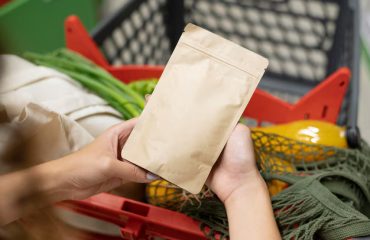Minimalist Packaging: Why Less Is More in 2025

As sustainability takes centre stage for both businesses and consumers, minimalist packaging is emerging as a significant trend in 2025. Brands are moving away from excessive materials, complicated designs, and wasteful packaging in favour of simple, functional, and eco-friendly alternatives. This shift not only reduces environmental impact but also strengthens brand identity and enhances the consumer experience. Whether through custom packaging boxes or innovative designs in custom printed boxes across Australia, companies recognise that less is indeed more.
What Is Minimalist Packaging?
Minimalist packaging focuses on using fewer materials, simple design elements, and sustainable practices while maintaining product protection and functionality. This approach typically involves:
- Eco-friendly materials – Recyclable, biodegradable, or compostable options such as kraft paper, bamboo, or plant-based plastics.
- Reduced packaging layers – Eliminating unnecessary inserts, wraps, and plastics.
- Simple branding – Clean typography, neutral colors, and minimal graphics convey a brand’s message effectively.
- Functional design – Optimised packaging sizes to reduce material waste and shipping costs.
By embracing these principles, brands can cut down on waste while delivering a sleek and modern look that resonates with environmentally conscious consumers.
Why Minimalist Packaging Is Gaining Popularity
1. Sustainability & Environmental Responsibility
Consumers are increasingly aware of the environmental impact of packaging waste. With landfills filling up and plastic pollution becoming a global crisis, brands adopting minimalist packaging can significantly reduce their carbon footprint. Fewer materials mean less waste, and using biodegradable or recyclable materials ensures a more sustainable end-of-life cycle.
The Australian Government’s Department of Climate Change, Energy, the Environment and Water (DCCEEW) is actively reforming packaging regulations to support the transition to a circular economy. These reforms aim to ensure that packaging is designed to eliminate waste, is recyclable, and circulates within the economy for as long as possible. Businesses are encouraged to make their packaging more recyclable, with key resources available to support sustainable packaging design.
2. Cost Savings for Businesses
Reducing packaging materials benefits the environment and lowers production and shipping costs. Smaller, lighter packaging requires less material, reduces storage space, and minimises transportation expenses. Companies that streamline their packaging can improve their bottom line while enhancing their brand’s sustainability efforts.
3. Improved Consumer Experience
Today’s consumers appreciate simplicity and ease of use. Overly complicated packaging can frustrate buyers, leading to negative brand experiences. Minimalist packaging offers a sleek, straightforward unboxing process that aligns with modern preferences for convenience and efficiency.
4. Enhanced Brand Identity & Recognition
Minimalist packaging allows brands to stand out in a crowded marketplace. By focusing on clean, bold branding, companies can create a strong visual identity that is instantly recognisable. Many luxury and eco-conscious brands have successfully used minimalism to create a premium, sophisticated image.
How Brands Can Adopt Minimalist Packaging
1. Use Sustainable Materials
Brands should prioritise eco-friendly materials such as:
- Recycled paper and cardboard
- Compostable bioplastics
- Plant-based inks and adhesives
- Minimal-use glass or aluminum for reusable options
2. Optimise Packaging Design
Instead of using oversized boxes or excessive filler, companies should create packaging that fits the product perfectly. This reduces material waste and ensures a more efficient supply chain.
3. Limit Graphics & Text
A clutter-free design with only essential information can make packaging more visually appealing and easier for consumers to engage with. Simple, bold fonts and natural color schemes often work best.
4. Reduce Single-Use Packaging
Encouraging reusable or refillable packaging solutions helps reduce waste and aligns with consumer preferences for sustainability.
5. Incorporate Smart Packaging Features
Minimalist packaging can still be highly functional. Brands can integrate QR codes or NFC tags to provide additional product information, instructions, or sustainability details without cluttering the packaging with excessive text.
The Future of Minimalist Packaging
As we move into 2025, the trend toward minimalist packaging will continue to shape the industry. Brands investing in custom packaging boxes and custom printed boxes in Australia will find that simplicity enhances sustainability and strengthens customer loyalty. Less truly is more regarding packaging—both for businesses and the planet.
FAQs on Minimalist Packaging in 2025:
2. Why is minimalist packaging becoming popular in 2025?
There are several reasons for the rise in minimalist packaging:
- Sustainability: Consumers are more aware of the environmental impacts of excessive packaging. Minimalist designs reduce waste and use eco-friendly materials, aligning with sustainability goals.
- Cost efficiency: Less material use reduces business production, storage, and shipping costs.
- Consumer experience: Shoppers prefer straightforward packaging that's easy to open and use. Minimalist packaging offers a more enjoyable and functional experience.
- Brand recognition: Clean and simple designs help businesses create stronger brand identities and differentiate themselves in a crowded market.
3. How can brands adopt minimalist packaging?
Brands can integrate minimalist packaging through:
- Sustainable materials: Using recyclable, biodegradable, or plant-based options like recycled paper, bioplastics, and aluminium.
- Optimised design: Creating packaging that fits the product perfectly, reducing unnecessary fillers and waste.
- Minimal graphics and text: Focusing on simple, bold fonts and natural colour schemes to communicate the brand’s message without clutter.
- Reusable or refillable options: Reducing single-use packaging to encourage sustainability and reduce waste.
- Smart features: Adding QR codes or NFC tags for extra information, keeping the design clean and informative without excessive text.
4. What are the environmental benefits of minimalist packaging?
Minimalist packaging significantly lowers the environmental footprint by:
- Reducing waste: Fewer materials mean less packaging waste in landfills.
- Sustainable lifecycle: Eco-friendly materials ensure the packaging can be recycled, composted, or reused, contributing to a circular economy.
- Lower carbon emissions: Using less material and optimising shipping size, minimalist packaging reduces transportation costs and the associated carbon footprint.
5. How does minimalist packaging benefit businesses?
For businesses, minimalist packaging provides:
- Cost savings: Less material means lower production, storage, and shipping costs.
- Brand differentiation: Unique minimalist designs create a premium, sophisticated brand identity that stands out in the marketplace.
- Increased consumer appeal: As consumers prioritise sustainability, brands adopting minimalist packaging can build stronger customer loyalty and enhance overall brand perception.
6. What are the future trends for minimalist packaging in 2025?
As the minimalist packaging trend continues to evolve, expect to see:
- More eco-friendly innovations: Brands will increasingly adopt sustainable packaging solutions, including reusable materials and bioplastics.
- Smart packaging: Integrating technology like QR codes, NFC tags, and even augmented reality to provide additional product info without cluttering the design.
- Greater focus on personalisation: Some brands incorporate minimalist designs with personal touches to create a unique customer experience while maintaining sustainability.






You must be logged in to post a comment.